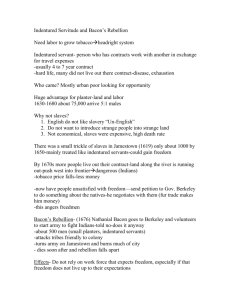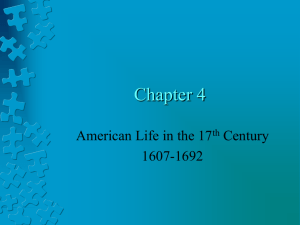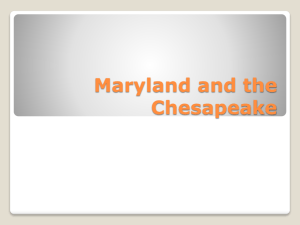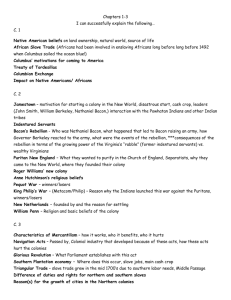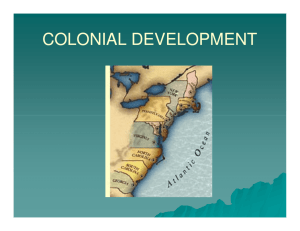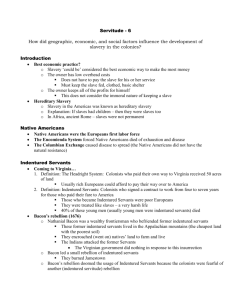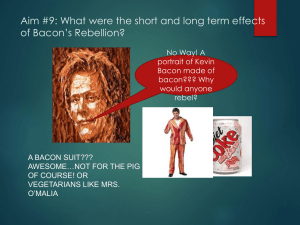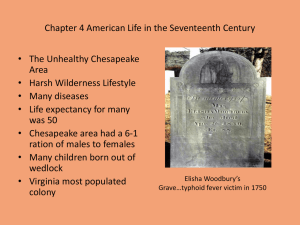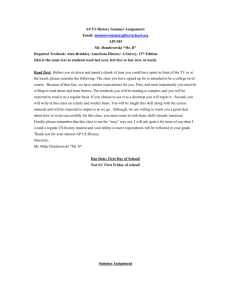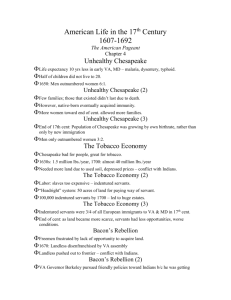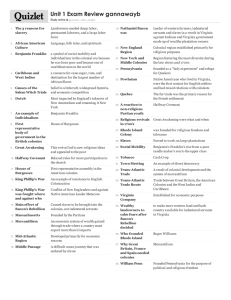Indentured Servitude to Slavery
advertisement
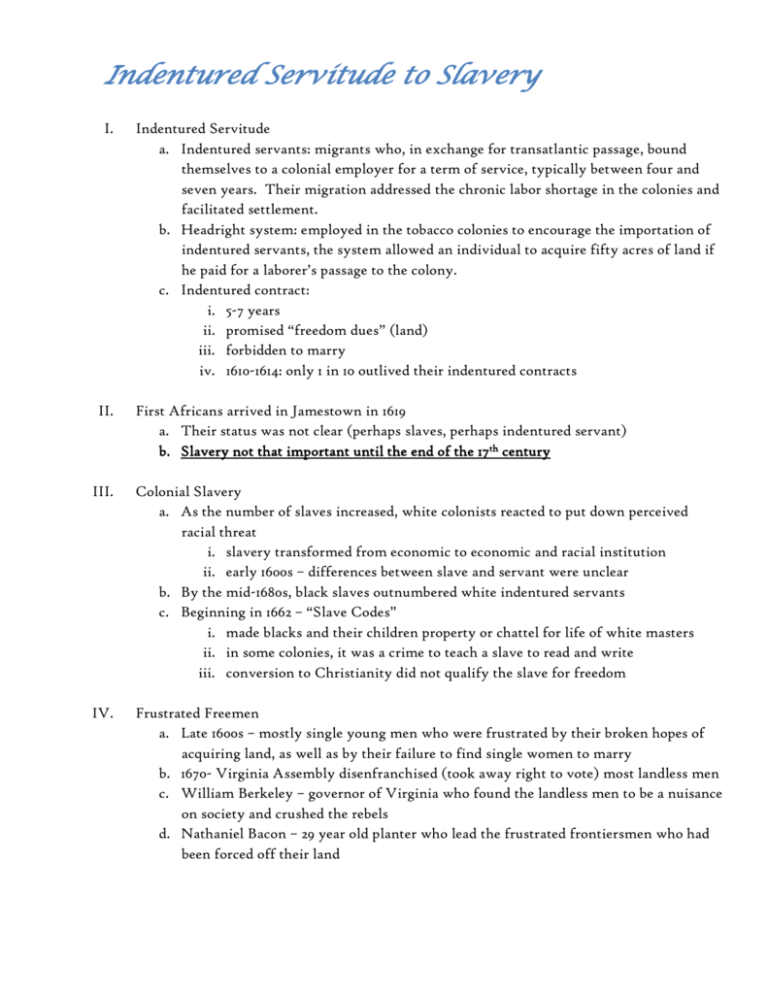
Indentured Servitude to Slavery I. II. Indentured Servitude a. Indentured servants: migrants who, in exchange for transatlantic passage, bound themselves to a colonial employer for a term of service, typically between four and seven years. Their migration addressed the chronic labor shortage in the colonies and facilitated settlement. b. Headright system: employed in the tobacco colonies to encourage the importation of indentured servants, the system allowed an individual to acquire fifty acres of land if he paid for a laborer’s passage to the colony. c. Indentured contract: i. 5-7 years ii. promised “freedom dues” (land) iii. forbidden to marry iv. 1610-1614: only 1 in 10 outlived their indentured contracts First Africans arrived in Jamestown in 1619 a. Their status was not clear (perhaps slaves, perhaps indentured servant) b. Slavery not that important until the end of the 17th century III. Colonial Slavery a. As the number of slaves increased, white colonists reacted to put down perceived racial threat i. slavery transformed from economic to economic and racial institution ii. early 1600s – differences between slave and servant were unclear b. By the mid-1680s, black slaves outnumbered white indentured servants c. Beginning in 1662 – “Slave Codes” i. made blacks and their children property or chattel for life of white masters ii. in some colonies, it was a crime to teach a slave to read and write iii. conversion to Christianity did not qualify the slave for freedom IV. Frustrated Freemen a. Late 1600s – mostly single young men who were frustrated by their broken hopes of acquiring land, as well as by their failure to find single women to marry b. 1670- Virginia Assembly disenfranchised (took away right to vote) most landless men c. William Berkeley – governor of Virginia who found the landless men to be a nuisance on society and crushed the rebels d. Nathaniel Bacon – 29 year old planter who lead the frustrated frontiersmen who had been forced off their land V. Bacon’s Rebellion (1676) a. Uprising of Virginia backcountry farmers and indentured servants led by planter Nathaniel Bacon; initially a response to Governor William Berkeley’s refusal to protect backcountry settlers from Indian attacks, the rebellion eventually grew into a broader conflict between impoverished settlers and the planter elite. b. Events leading up to Bacon’s Rebellion i. Bacon led 1,000 Virginians in a rebellion against Governor Berkeley ii. rebels resented Berkeley’s close relations with the Indians iii. Berkeley monopolized the fur trade with the Indians in the area iv. Berkeley refused to retaliate for Indian attacks on frontier settlements c. Bacon’s Rebellion i. rebels attacked Indians, whether they were friendly or not ii. Governor Berkeley was driven from Jamestown iii. rebels burned the capital iv. Bacon suddenly died from a fever v. Berkeley brutally crushed the rebellion and hanged 20 rebels d. Results of Bacon’s Rebellion i. it exposed resentments between inland frontiersmen and landless former servants against the gentry on coastal plantations 1. socio-economic class differences and clashes between rural and urban communities would continue throughout American history ii. planter elites searched for laborers less likely to rebel – BLACK SLAVES!!!! VI. The Atlantic Slave Trade a. Middle Passage – transatlantic voyage slaves endured between Africa and the colonies. Mortality rates were notoriously high. The long and hazardous “middle” segment of a journey that began with a forced march to the African coast and ended with a trek into the American interior. i. 11 million African men, women and children were put on ships to the New World ii. 2 million perished mid-voyage iii. 400,000 enslaved Africans came ashore in North America, the rest went to Latin America & the Caribbean
